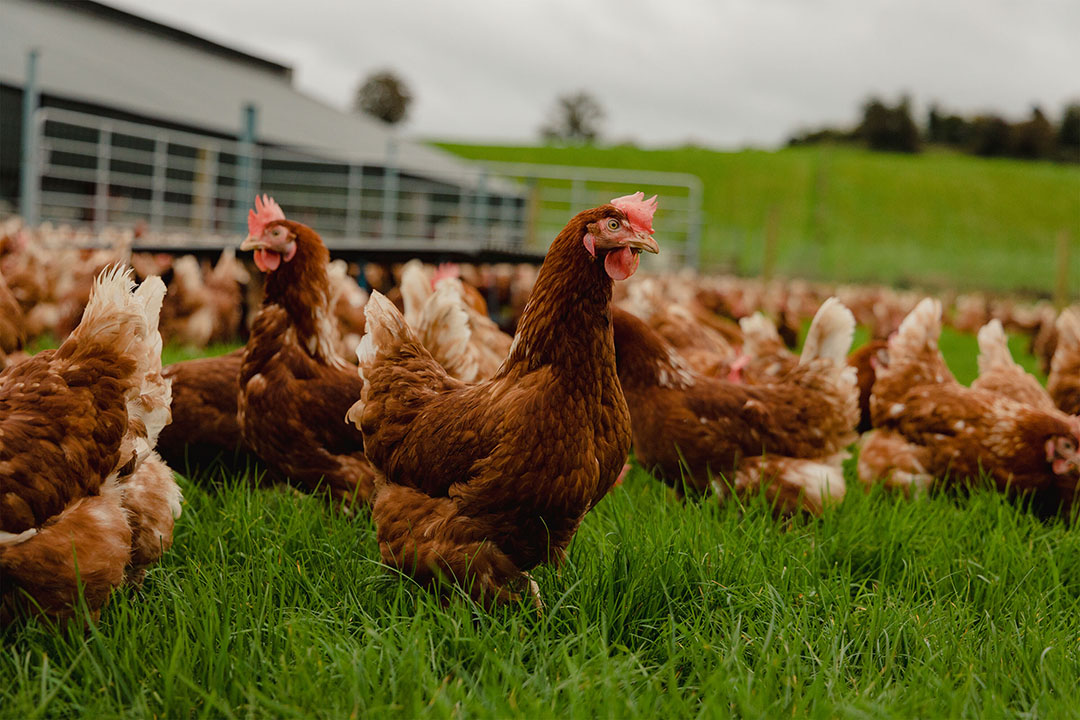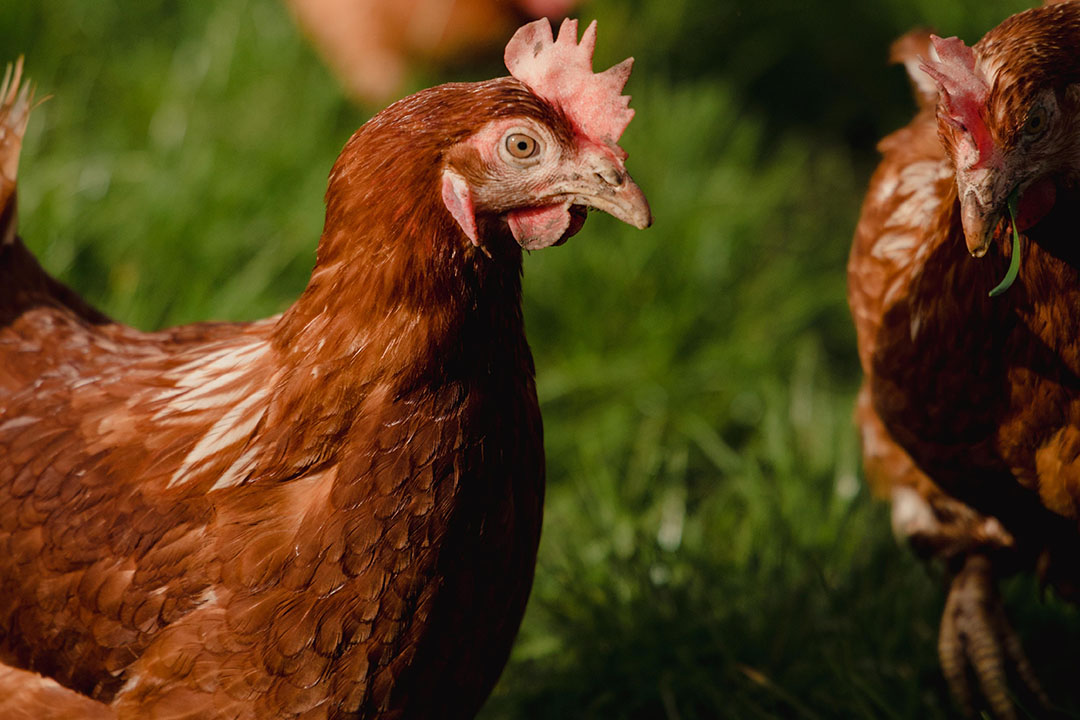The role of gut health in cage-free egg production

The transition to cage-free egg production is gaining momentum. The European Commission estimates that 50% of egg production has already moved to cage-free. For those now working on their transition plan, it is time to think about new challenges or challenges that may be heightened with this new production system.
Cage-free housing systems increase the ability of the birds to mix, move and have contact with litter and the outside environment, leading to several potential gut health issues, including antibiotic use, feed consumption, disease control and wet litter.
Antibiotic use
The European Commission’s legislation to produce all eggs from alternative cage-free housing systems will increase the numbers of laying hens kept in non-cage systems over the next few years. It has been shown that there is more exposure to potential disease-causing organisms in these environments, contributing to higher mortality levels than in cage systems. The higher mortality will negatively impact bird health and welfare, food security and egg production sustainability, resulting from the reduced productive output. To support performance and reduce mortality when changing to a cage-free system, farmers may turn to antibiotics.
However, the use of antibiotic growth promoters (AGPs) and the associated antimicrobial resistance has been highlighted as a global health problem for both humans and animals. Therefore, with more birds being raised in conditions that favour the spread of pathogens, there is a need to maximise performance in cage-free systems to avoid the use of AGPs. One way to help reduce AGPs is to improve and support the bird’s gut health and microbiome through the ‘Seed, Feed, Weed’ programme. This incorporates seeding the gut with favourable organisms, feeding a favourable environment for these organisms and weeding out unfavourable organisms.

Microflora development
To support gut and microflora development in the young bird, it must be exposed to favourable organisms as early as possible. This can be done via a probiotic that helps the bird develop a diverse and balanced microflora population, promoting gut health and, therefore, better nutrient digestibility and absorption, immunity and performance. Not only does a good microflora population improve villi height and increase the surface area of the gut but it can also improve the bird’s ability to defend against pathogenic bacteria.
It is vital that – once established – this good microflora population is maintained. This can be challenging in a cage-free housing situation as the birds have more opportunities to pick up pathogenic bacteria that can colonise the gut and increase the risk of enteritis leading to reduced performance, as well as health and welfare issues. To help the bird sustain a good microflora population, a buffered weak organic acid compound can be incorporated in the feed, helping to lower the pH in the gastointestinal tract (GI).
A low GI tract pH reduces the growth of pathogenic organisms such as Clostridia and Campylobacter which are intolerant of acidic conditions. Feeding a buffered weak organic acid helps the favourable organisms reach the small intestine, promoting the growth of beneficial microflora.
Supplementing the feed
With the increased exposure to potential disease-causing organisms in cage-free systems, it can be helpful to add a supplement to the feed to weed out and reduce colonisation of the gut by pathogenic bacteria. Actigen is a second-generation unique bio-active product derived from Saccharomyces cerevisiae, selected by Alltech and isolated to create a more effective product to optimise gut health. For a pathogen to cause disease it first needs to adhere to the gut epithelial lining via type-1 fimbriae projections. Once attached, the pathogen can replicate which can then lead to inflammation, villi damage and reduced nutrient absorption.
By binding to the type-1 fimbriae, Actigen can inhibit attachment by pathogenic bacteria and is preferable to antibiotics that are non-specific and destroy beneficial organisms as well as pathogens. It has been shown to improve absorptive capacity by increasing villi height and surface area and enhancing the villi:crypt ratio, enabling better absorption of nutrients and thus improved performance. It also helps to maintain microbial diversity and promote good gut health and the animal’s natural defences.
Feed consumption
Moving birds to a cage-free system, such as a free-range facility, allows the layers to exhibit several natural behaviours that are limited in a cage system. These include running, flying, dust bathing, beak cleaning, preening and stretching. This increased movement can raise the metabolic energy needed by the hen which can be further affected by adverse weather conditions.
The bird will need to increase its feed intake to meet this heightened energy requirement. Otherwise energy will be diverted away from maintenance and egg production. This means it is vital that the bird has optimum gut health, maximising its intestinal surface area to allow for efficient nutrient absorption and improved feed utilisation. An activated immune system requires both energy and nutrients which are repartitioned from production. With the greater chances of cage-free birds encountering pathogenic bacteria, the bird must have optimum gut health and microbiota as they play a role in modulating the immune system by preventing mucosal infections.

Wet litter
In cage-free systems layers have more contact with litter than when housed in cages. This means that wet litter becomes a greater concern. Wet litter and high ammonia content can lead to footpad dermatitis and bumblefoot, a painful footpad infection. While uncommon in furnished cages, the frequency of bumblefoot can be several times greater in litter-based houses. Many factors may contribute to wet litter, including digestive upset, nutritional imbalance, disease, drinker spillage, inadequate ventilation and humid weather. Both non-pathogenic and pathogenic agents can cause diarrhoea and lead to wet litter. Therefore, it is vital that the underlying cause is identified and corrective measures implemented as soon as possible to enable the bird to regain optimum gut health.
Mycotoxins, coccidiosis and dysbacteriosis can reduce gut integrity and damage the intestinal epithelium, leading to decreased absorption and digestion of nutrients and increased intestinal barrier permeability which can lead to wet litter. When the gut structures are damaged, undigested nutrients can pass into the caeca providing a nutrient source for the microbial population residing there. Often, potentially pathogenic organisms are found in the caeca and this nutrient source allows them to replicate to numbers large enough to cause imbalances in the microbiota which then impacts performance and litter conditions.
Disease control
Coccidiosis is an enteric condition caused by protozoa of the species Eimeria which infects the intestinal lining and causes damage that enables other pathogenic bacteria to proliferate. The symptoms of coccidiosis are bloody diarrhoea, dehydration, lethargy, high mortality, poor growth/weight gain and a drop in egg production. Coccidiosis can be controlled via ionophores and chemical compounds added to the feed that inhibit oocyst development. However, resistance and tolerance can develop with these anticoccidials, so they need to be used in cycles to be effective.
Another way to control coccidiosis is via a coccidia vaccination programme that develops immunity against coccidiosis. Having increased access to litter increases the exposure of cage-free birds to coccidia. However, layers are commonly vaccinated for coccidiosis, especially in cage-free systems. Therefore, they will have immunity by the time they are on the layer farm.
Worms
Intestinal worms can be an issue when birds have contact with grass, soil and faeces. Therefore, exposure to intestinal worms is likely in a barn or free-range system. Worms damage the bird’s gut, resulting in reduced performance. Three main worms that may cause problems in cage-free birds are roundworms, hairworms and caecal worms.
Worms can carry other parasites, like Histomonas, which causes blackhead. Blackhead disease (histomoniasis) is a pertinent poultry disease caused by a protozoa that can be spread to the bird through roundworm. Healthy birds become infected when they eat food, invertebrates (such as earthworms) or ingest bird droppings contaminated with the protozoa. Direct bird-to-bird transmission can also occur within a flock.
Chickens infected with blackhead disease are usually listless and have drooping wings, unkempt feathers, yellow droppings and reduced egg production. It is essential that birds infected with blackhead are wormed to kill the worms. It is vital that birds are monitored for worms and wormed effectively before moving them to laying accommodation prior to the onset of lay and during lay, to reduce build-up on pasture.













